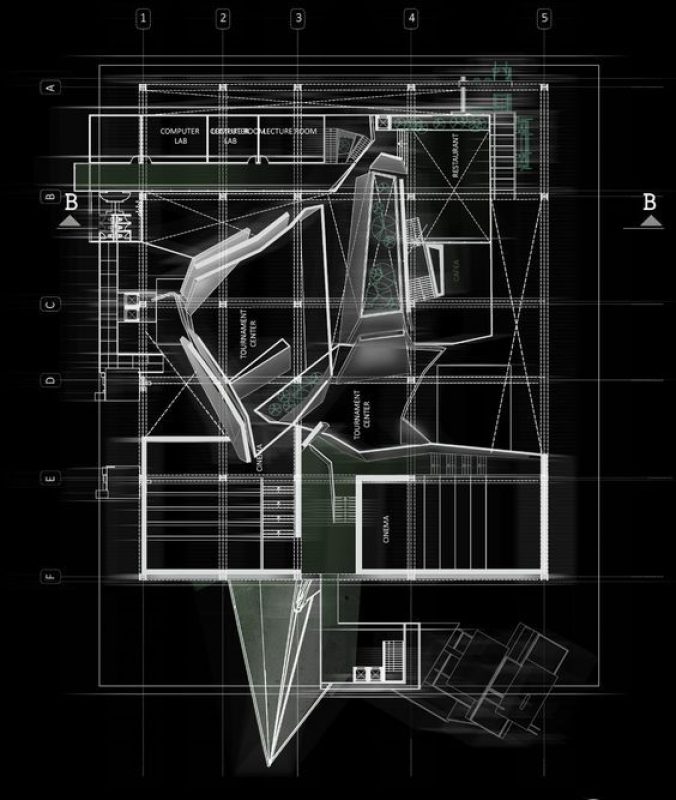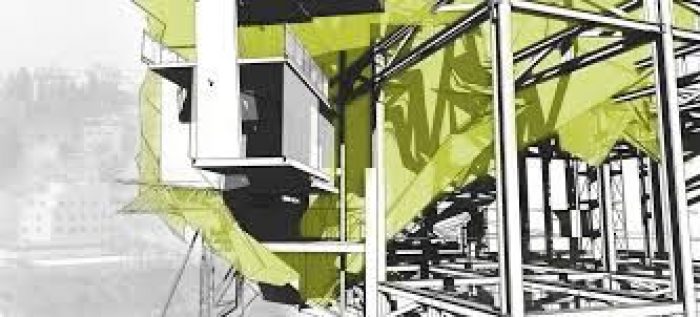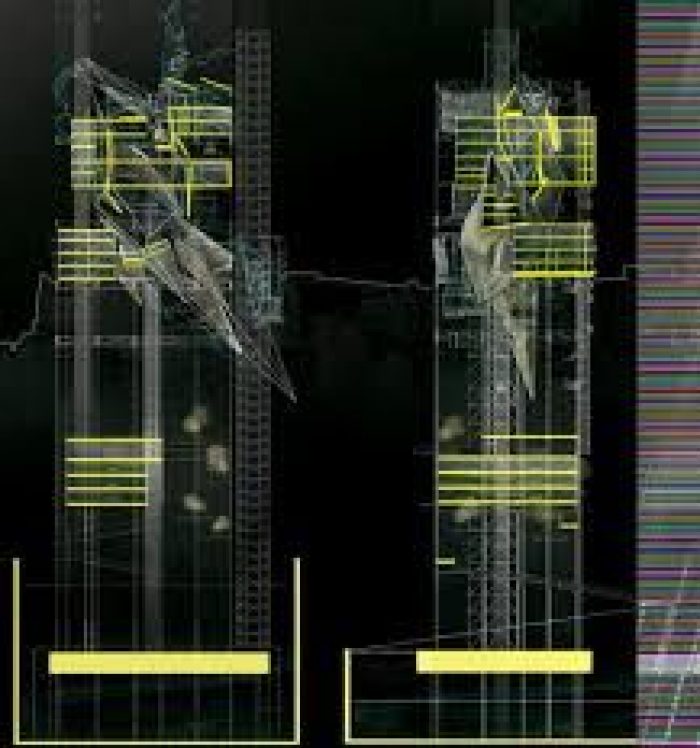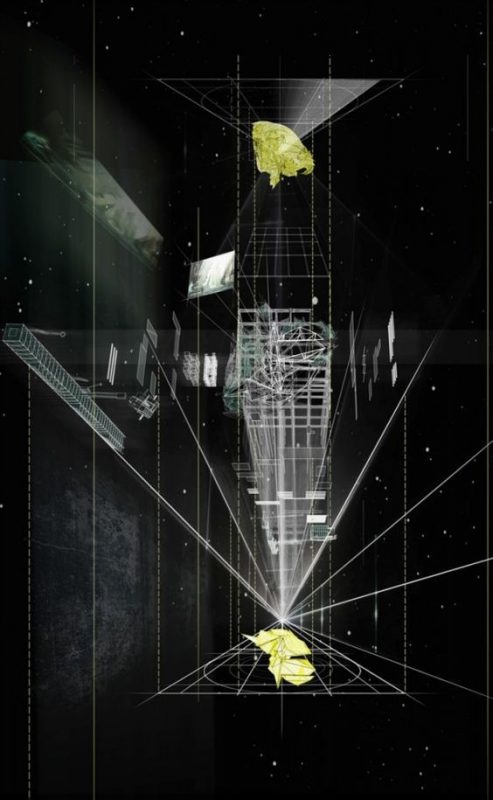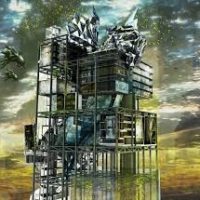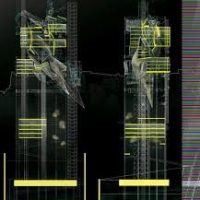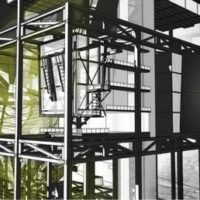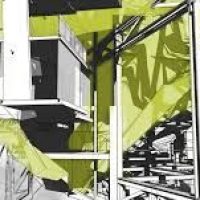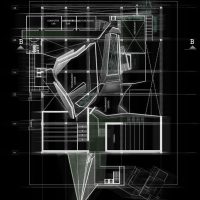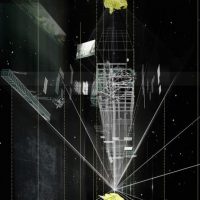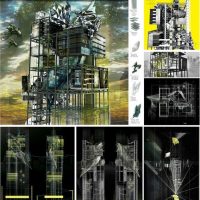Bhāva : As humans, we occupy a multiplicity of worlds; from the past to the future, from the physical to the abstract, and from the real to the virtual. Nevertheless, gaps and clashes exist between these worlds. Acknowledging the parallels and divides between the physical and abstract worlds requires a narrative that brings all these worlds together. Such a narrative was used in the design of the Bhāva, a Community Technology Center (CTC).
The basic conception behind the design is to collapse real and virtual worlds into one through the creation of a gaming universe that is a hybrid of virtual elements and physical objects (HVP). In this universe, the outer world of reality merge and meet with the inner world of the mind. Such a designed universe creates a state of spatial immersion, a state of being physically present in a non-physical non-abstract world giving rise to the state of multidimensional consciousness where one is conscious on more than one dimension and more than one level. In such a universe, the concrete and abstract, the real and virtual no longer constitute a duality, rather the two become one. To design this state of becoming, of transition, of transcendence is to design a Bhāva. As such, the design of a CTC is conceived as the design of orders in collision: an order of existing reality confronted and challenged by an order of the new materialized virtual, nevertheless forming a Gestalt.
The design of the project is the creation of a field condition in which a Cartesian system of modular elements establishing structure and boundaries of materials echoing the memory of the site is disrupted by a parasitic tectonic structure that moves and transforms portraying a world in a perpetual state of change. The design is seen as an interplay between the Cartesian grid and energetic form that disrupts and challenges the omnipresence of the Cartesian grid and launching towards the fourth dimension.
This tectonic structure that is anexact, temporal, and disproportionate is not created without merit; its geometry is scripted by mathematics of space and time as demonstrated by Lorentz transformations of space and time i.e. to stretch and squash. More pertinently, the curvature and breaking of the structure is stirred by quantum mechanics, and more specifically chromo dynamics and lattice theory to calculate the rotation, coupling, and splitting of the various components of form. By selecting a time slice to show the topological chart of the vacuum calculated and presenting it as a transformative tectonic structure, a diachronic objectile of enexact geometries will be created.
The interaction of the ideal vs monstrous, scripy vs form, and proportional vs recursive produces a heterogenic masterpiece that acts as frozen frame in continuous process of variations that will grow tension between possibilities and corporate the unexpected in a controlled environment. The in-between spaces are contour spaces freed from the constraints of historical reality and of any predetermined meaning and purpose are functionally ambiguous and conceptually open; they aim to expand the scope and depth of users’ experiences. Moreover, these spaces are transformational; they show the transformation of one system to another.
The Bhāva is made up of three systems: a Cartesian system, a parasitic system, and a climbing weaved lattice system. The Cartesian system is made up of modular columns and beams forming the main structure. This system of beams and posts is made of Architecturally Exposed Structural Steel, (AESS). The parasitic system that disrupts and challenges the Cartesian system is a topotransegric structure-a kinetic structure that constantly evaluates its surroundings and reconfigures according to these changing conditions.
The weaved lattice, whose geometry is based on a voronoi diagram branches and trudges on the Cartesian system and in between spaces just like vines on supports reminiscing traditional vines in the regional villages. The insertion and location of the lattice grows according to varying site conditions and functional needs bringing a dialogue of hierarchy and tectonic. The initial module of the lattice is made of flexible carbon tubes and holds elastic ETFE panels incorporating photovoltaic cells to generate electricity.
The overall design is a dynamic constructivist composition of ordered structure and splintered surfaces and twisted wiry forms creating a fantastical scene depicting an alternative world that glimpses into a parallel universe. This composition is not without merit; it is governed by the interaction of faktura, the particular material properties of an object, tektonika, its spatial presence, and underlying laws of physics, chromodynamics, and lattice theory.
Finally, the Bhāva is a machine to imagine and propose new, alternative routes out of the present moment. It is not just buildings, it’s a system of entirely re-imagining the world through new plans and scenarios.
Project Credits:
Name: Rasha Al Shami
School: The University Of Jordan
Advisor: Saleem M.Dahabreh, PhD
Arch2o has received this project from our readers in order to participate in the Students week 7 event, you may submit your own work for publication in the Students Week 8 by sending it to igraduate(at)arch2o.com
- courtesy of Rasha Al Shami
- courtesy of Rasha Al Shami
- courtesy of Rasha Al Shami
- courtesy of Rasha Al Shami
- courtesy of Rasha Al Shami-plan
- courtesy of Rasha Al Shami
- courtesy of Rasha Al Shami


